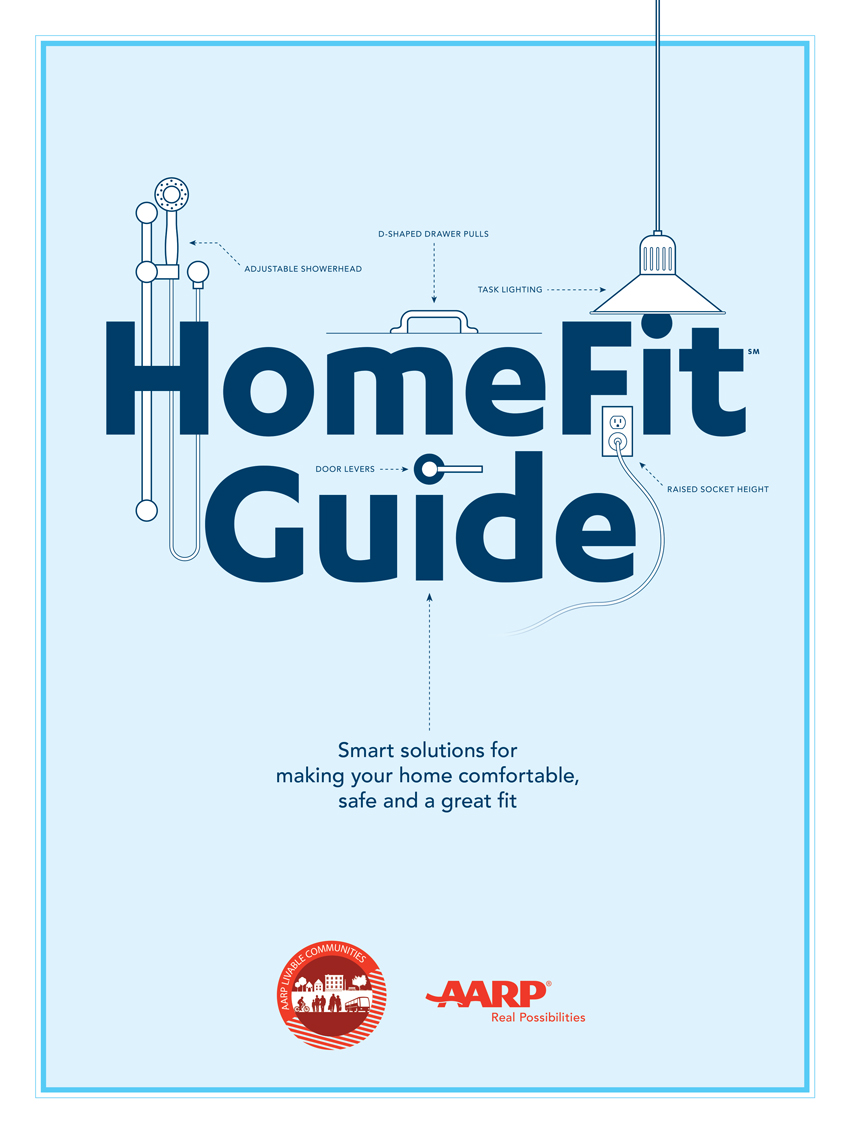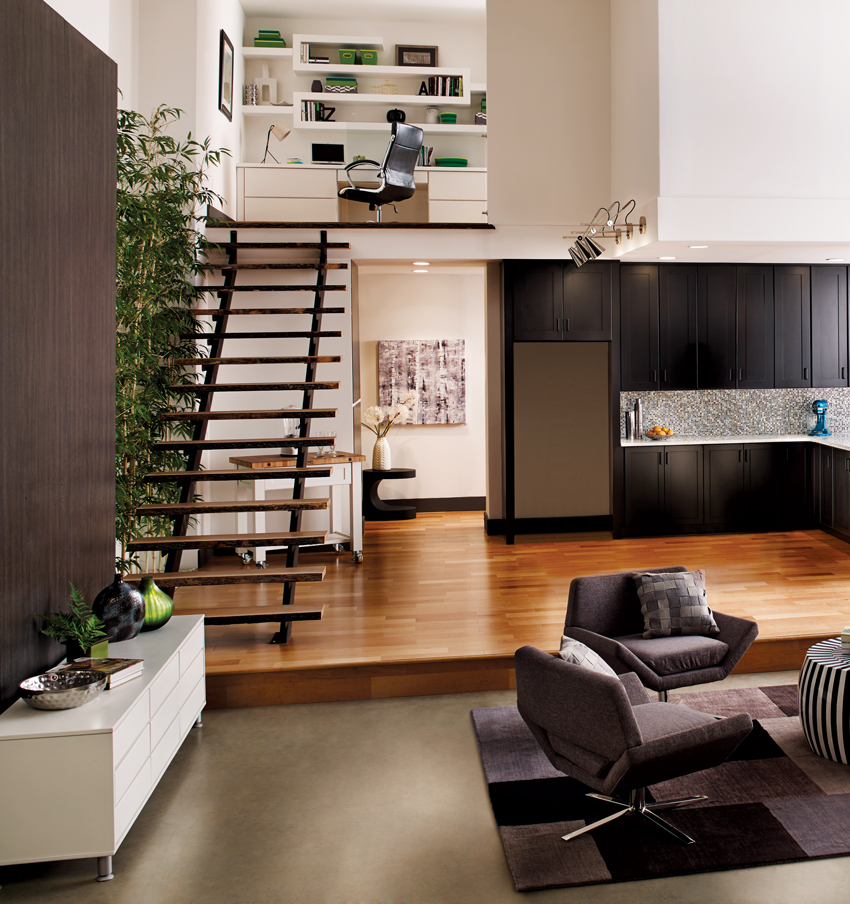Lifelong Housing
Trends Influencing Design
Residential designs are generally critiqued by the general public based on how well a residence suits their lifestyle, provides for their preferences, and stays within their budget. The interesting part for designers is to recognize that there are some very distinct groups of people that need housing with very different situations. To help us understand some of those differences, there are some national groups, publications, and organizations that are doing some very good and even groundbreaking work.
The Millennial Generation
At one time, the largest demographic group in the United States was the “baby boom” generation that emerged in the roughly 20-year period following World War II. That generation is now entering retirement and is being replaced by the “millennials” who were born roughly between 1975 and 1995. Currently in the age range of their 20s and 30s, this group has been touted in news reports, studies, and marketing efforts to discern what is similar and what is different about this generally well-educated, tech savvy, and capable generation. Of course, generalizations aren’t always justified. For example, The Atlantic magazine has reported that while white, suburb-raised millennials have mostly attended college and are considered to be quite upwardly mobile, minorities of this generation are sometimes “stuck” in poorer neighborhoods with little opportunity to move out.1 Nonetheless, most of this generation feels financial pain either from low wages or college debt burdens, and they have delayed buying homes accordingly. Many are living with their parents much longer as a result, even after finishing college, and in the interest of being mobile to find the best job opportunity (not to mention postponing marriage and a family for the same reason) would rather rent their housing than buy a place to live. Of course, there are variations and exceptions, but overall, this generation appears to be following a different path in life than their parents or grandparents did.
A magazine devoted to millennial lifestyle has even emerged, appropriately called Millennial Magazine (millennialmagazine.com). It recognizes some of these trends, but also indicates that millennials are indeed entering the housing market, with projections indicating they will begin to make an impact in large numbers in the coming years. Based on that, in March of 2015, the magazine published a list of seven things that they believe this generation is looking for when it comes to choosing a home.2 These include:
- Open floor plans that allow for group activities and entertaining with friends without being limited by small boxy spaces.
- Less maintenance since busy work and social schedules, or the need to travel out of town for a few days, aren’t conducive to spending a lot of time on cutting grass, repairing things in the house, or worrying about keeping up appearances.
- No formal dining room since sitting at formal group meals is not commonly part of their lifestyle. Rather, a home office or study space would be more useful, along with some flexible living space that could accommodate the occasional large meal gathering by moving the furniture around.
- Energy-efficient appliances that reflect an awareness of the need to control environmental impacts and a desire to keep long-term energy costs down. In some cases, it is reported that this single item could be the difference influencing a buying decision over another similar home that is not equipped with energy-efficient, more sustainable appliances.
- Hardwood floors or laminated flooring, which are are stated preferences over carpeting since they are easier to clean, meaning less maintenance, particularly if pets are involved.
- Comfort, a key criteria in most home decisions and one that certainly applies here, particularly for people who seek to unwind at home outside of work or other obligations.
- Connectivity to good cellular telephone service and high-speed Internet, which are not luxuries for this generation, but necessities of modern life. Many don’t have, or want, land-line telephones and use the Internet for a plethora of basic uses, such as communication, banking, shopping, and entertainment.
This list is certainly not definitive, but suggests that open, flexible, connected living conditions are needed without the trappings of undue maintenance or formalities. It is also suggests that some, or all, of these characteristics will not likely change much as this generation moves into other phases of life.

Source: AARP
The AARP HomeFit Guide is a resource for identifying ways to allow housing designs to accommodate people for aging in place.
AARP HomeFit Guide
Formerly known as the American Association of Retired Persons, AARP is a national organization focused on the 50-and-over population in this country with more than 38 million members. It has the resources and capabilities to look at a variety of social, economic, and lifestyle issues for this demographic, including housing. Its sheer numbers confirm the large increase in the aging and retired population in the United States. Research conducted by AARP among its members and retirees in general consistently finds that the vast majority of people age 50 and older want to stay in their homes and communities for as long as possible. This has produced the concept of “aging in place,” which allows people to stay living where they are even as physical capabilities may change over time.
With the above in mind, AARP created the HomeFit Guide specifically to help people stay in their homes, turning them into “lifelong homes” suitable for themselves and anyone else in their household. Its approach is similar to universal design in that it seeks to make a home more livable by incorporating design principles and products that are adaptable, safe, and easy to use. It points out that, done properly, such smartly designed features are attractive, stylish, and can come at all different price points. The guide offers solutions that range from simple do-it-yourself fixes to improvements that are more involved and require skilled expertise but are all billed as well worth the expense. As both an educational resource and a personalized tool kit, the AARP HomeFit Guide is presented as providing lessons, suggestions, and practical solutions.3
AARP Lifelong Housing Certification Project
So it is one thing to follow a guide for your own residence, but how would you know if an existing housing unit is already suitable for lifelong housing or not? AARP teamed up with southern Oregon’s Rogue Valley Council of Governments (RVCOG) to see if it could address that. What emerged is the Lifelong Housing Certification Project as a voluntary certification process for evaluating the accessibility and/or adaptability of homes. It provides a way to assess the “age friendliness” and accessibility of rental units, newly constructed homes, and existing homes. The program was specifically developed to help meet the growing market demand for accessible housing in the southern Oregon region and to promote aging in place for older adults and people with disabilities who want simply to live safely and independently. It is based on a comprehensive checklist of features developed using established universal design standards and with input from consumers, home builders, rental owners, and home inspectors. All Lifelong Housing Certification is done by a licensed inspector. The program became available for public use in 2013, and the first certifications were issued in 2014.
The program defines three different levels of certification based on the following:
- Level 1: Visitable: The home includes basic accessibility and/or adaptability of architectural features on the ground floor and is “visitable” for guests with disabilities. It has a wheelchair-accessible entrance, plus entertainment area, hall, and a bathroom. Other examples of basic features include door handles and faucets that are lever-style and don’t require grasping.
- Level 2: Fully Accessible: The ground floor of the home is fully accessible, including all Level 1 features plus an accessible bedroom and kitchen, parking area, and entrance. Examples of additional features include raised toilet and appliances, grab bars in the bathroom, etc.
- Level 3: Enhanced Accessibility: The home includes Levels 1 and 2 features and has been customized for specific accessibility needs (for example, a ceiling track for transfer or electronic care monitoring). Specific features are noted on the certificate and available from the seller or listing agent.
Once rated, the home is then added to the RVCOG Lifelong Certified Housing database, which is available to Realtors® and potential homebuyers and renters. The certification makes it easier for individuals of all ages to find homes that are suitable for lifelong living and promote the social and economic value of lifelong livability. Local consumers and housing industry professionals learn about the program from outreach activities (such as a booth at the Southern Oregon Home and Garden Show) and educational events for consumers and industry professionals that are organized by RVCOG, AARP, and other partners, including the local organization Age-Friendly Innovators. People can also find or learn more about the program online at the Rogue Valley Council of Governments website (www.rvcog.org).

Photo courtesy of Whirlpool Corporation
Flexible, well-designed housing incorporates flexible-use spaces to accommodate owners’ changing needs.
NAHB Certified Aging-in-Place Specialist (CAPS)
The National Association of Home Builders (NAHB) (www.nahb.org), in collaboration with AARP and other experts, has taken things national by developing the Certified Aging-in-Place Specialist (CAPS) designation for housing design and construction professionals. Based on training and testing during a multicourse educational program, Certified Aging-in-Place Specialists are taught to understand the unique needs of the older adult population. They also become knowledgeable about aging-in-place home modifications, common remodeling projects, and solutions to common barriers. CAPS designees are often remodelers, but designers, architects, and others frequently achieve this designation as well.
Certified Aging-in-Place Specialists can fill a variety of needs. First, they can recommend updates to housing that will help a person live independently in his or her own home. They can also work with occupational therapists (OTs) to develop a home modification or build plan based on the safety and functional needs of an individual or household. Of course, they will need to collaborate with licensed architects, interior designers, or contractors about building and design strategies and techniques for creating barrier-free living spaces that are attractive and functional. NAHB is quick to point out that CAPS remodelers and design-build professionals are not medical or health-care professionals and do not give advice on those matters. Rather, they provide guidance on ways to adjust the design and construction of homes to promote aging in place.









